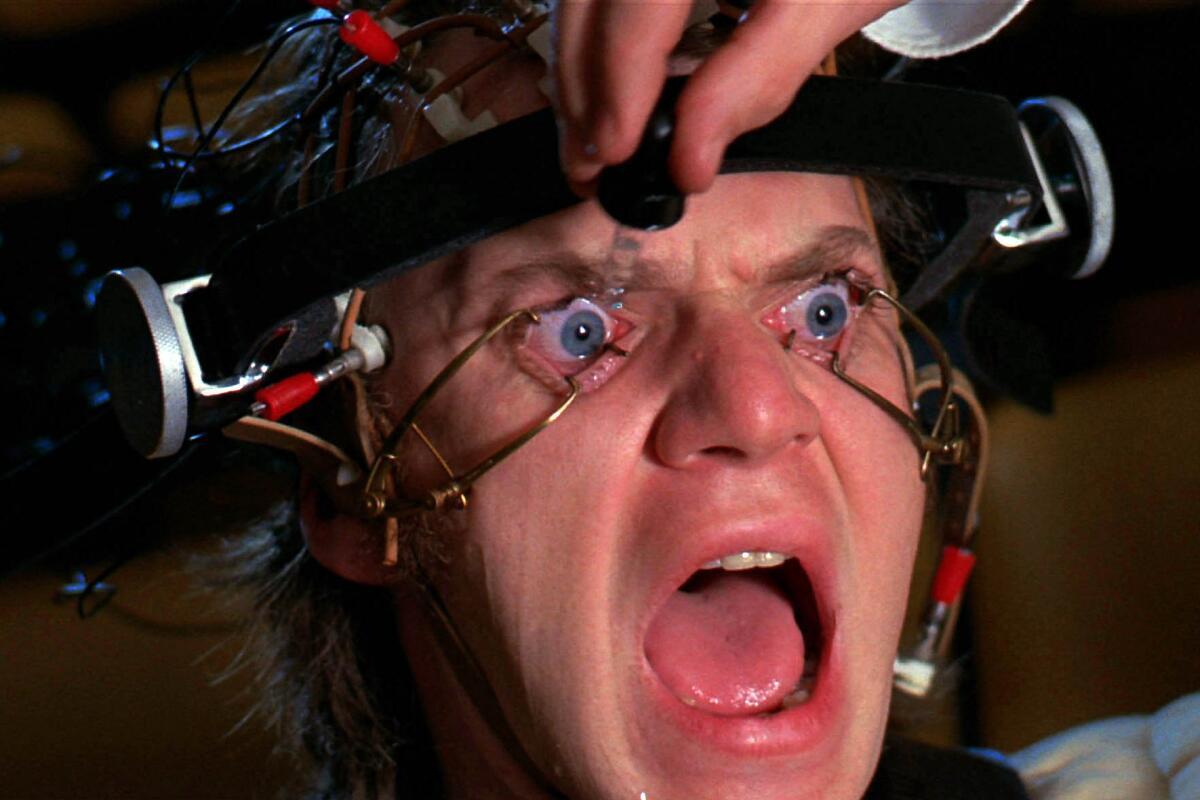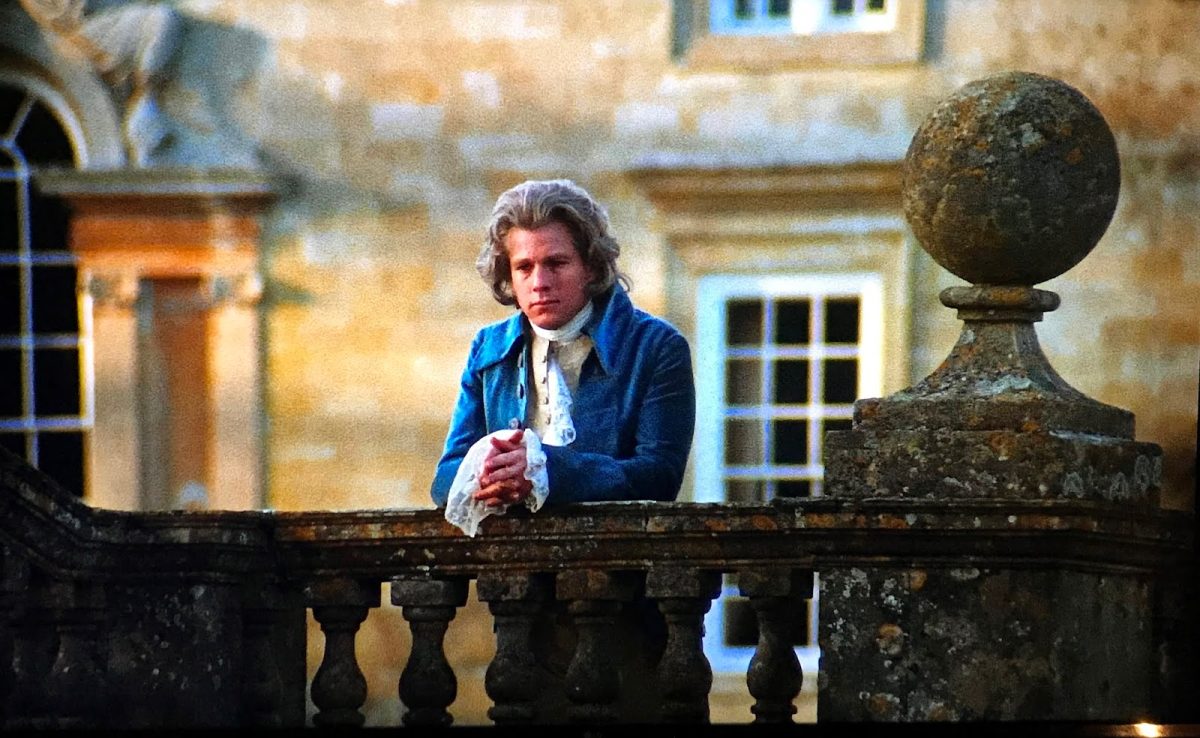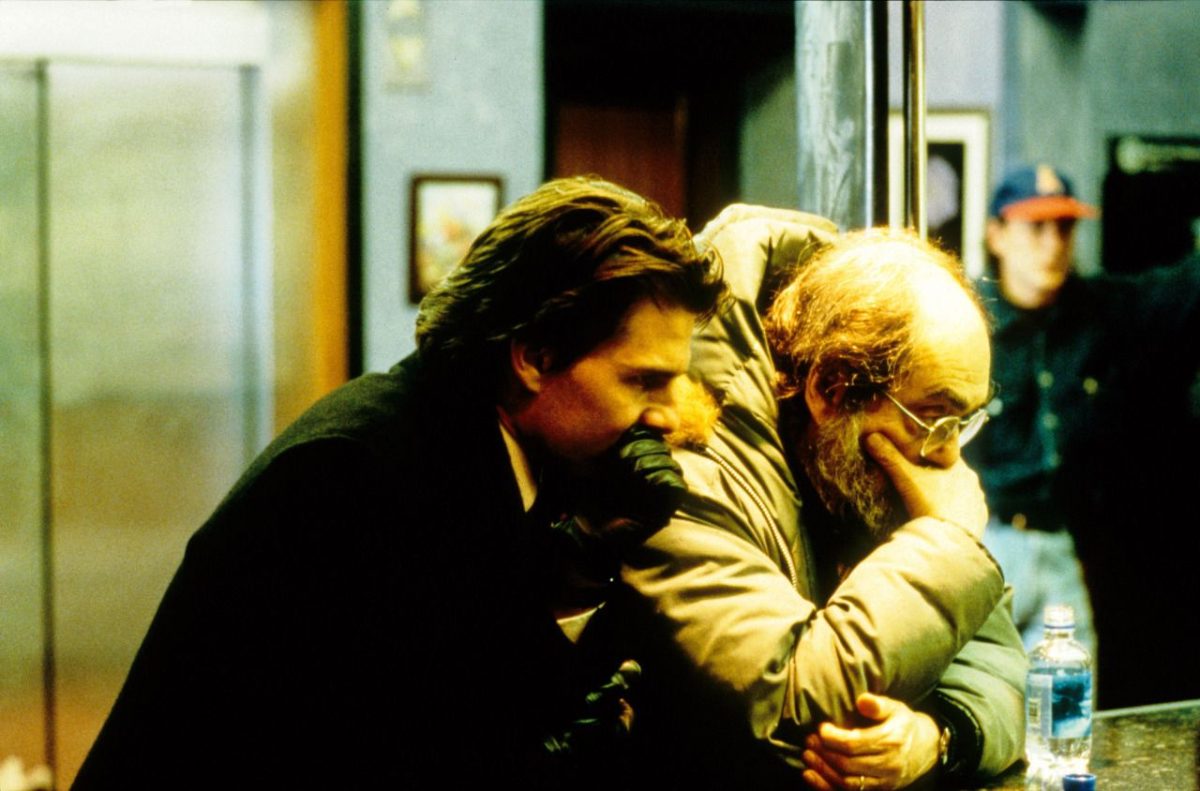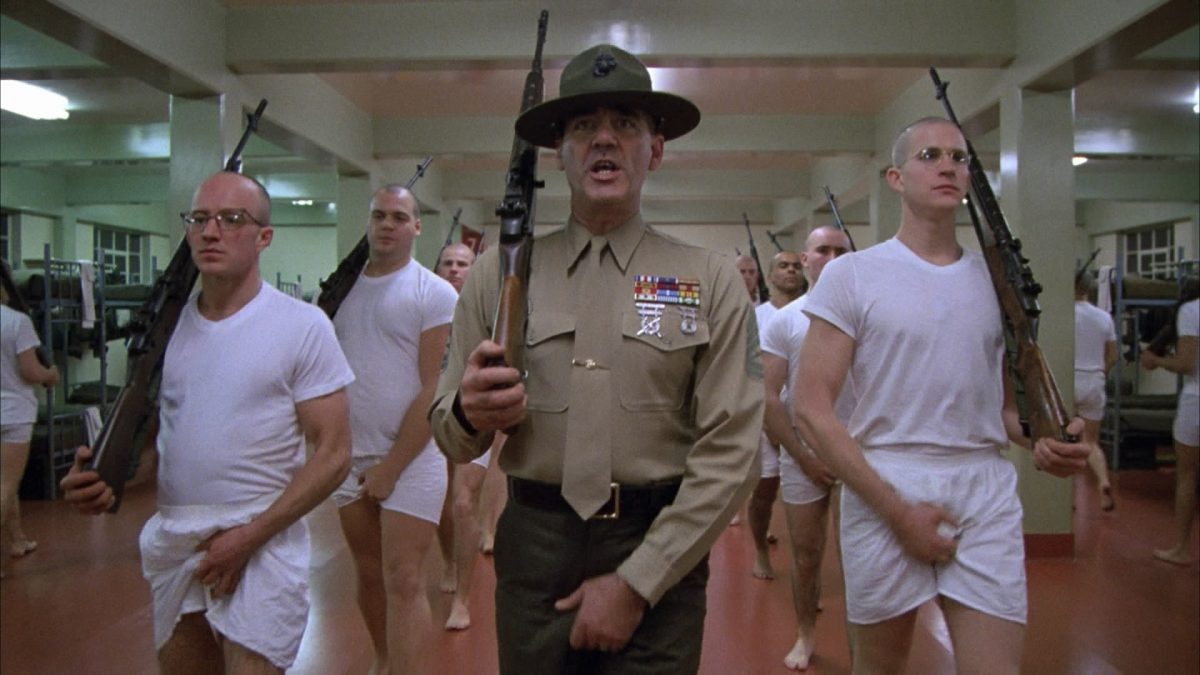by Joy Gould Boyum
Anthony Burgess’s A Clockwork Orange may be a stunning novel, but it’s also a stardingly savage one—a darkly ironic fable that in its pessimistic view of man and society, in the extreme horror of its materials, and in the scatological nature of its vision would have done Jonathan Swift proud. Its setting is a socialized England in the not-very-distant future where law and order no longer exist, where sex has been transformed into pornography, and politics has become a mere struggle for power. Garbage litters the streets, graffiti decorates building walls, and in the guise of vicious guerillas of the night, gangs of teenagers wander about robbing, beating, and raping anyone foolish enough to leave his home after dark or to unlock his doors.
The novel’s protagonist is one of these teens—a fourteen-year-old gang leader named Alex who divides his time between playing at what he dubs the “old ultra-violence” and indulging in violent sexual fantasies to music by the likes of “glorious Ludwig van.” Alex is a wry and merry sadist until, after murdering a helpless old woman, he is sent to jail and rehabilitated by the state through the “Ludovico treatment.” A newly developed conditioning process, this treatment manages to make violence repugnant to Alex, but only at the cost of making sex and art repugnant too. Worse, it turns him into a mechanized creature—in Burgess’s phrase, into “a clockwork orange.” A subsequent suicide attempt, however, restores him to his former self, though in regaining his humanity, he also, of course, regains his passion for ultra-violence.
Direct in its themes and schematic in its construction—its essentially Christian allegory is divided into three fairly neat sections: before the fall, after the fall, the resurrection—the novel presents few problems in interpretation. Its central thesis is clear: a man deprived of free will is no longer truly a man. and so even if he chooses evil, that choice is still better than no choice at all. The novel’s difficulties lie instead in making its thesis palatable. For readers must not only be persuaded to accept the novel’s criticism of society’s dehumanizing institutions and their threat to human individuality, they must also be able to entertain the truly unsettling materials that carry these views—the rapes, the murders, the deconditioning process itself. And they must also be willing to share in the novel’s affirmation of the vicious Alex, without which its central argument loses all force.
That Burgess does in fact manage to impose his disconcerting vision on us is testimony to his novelistic powers, just as it also is to the truly dazzling quality of his chief device for reaching this end: having Alex tell his own story in his distinctive teenage argot, Nadsat. A brilliant Joycean creation, Nadsat is constructed essentially out of Slavic roots that Burgess has anglicized, often turning them into quite marvelous puns. The Russian khorosho meaning “good” or “well,” for example, is transformed into “horror-show,” which is precisely what “good” means to Alex; the Russian ludi (people) is transmuted into “lewdies,” which is again what people are to our hero. Nadsat is also made up of bits of slang (“cancer” for “cigarette”), archaisms (the use of “thou” and “thee” and “O, my brothers ), and what Stanley Edgar Hyman calls “amputations” (“pee and em” for “pop and mom”). Nadsat then serves as the key source of the novel’s wild, black humor, while it also provides Alex with much of his bizarre appeal. Those thees and thous, coupled with his passion for Ludwig van, give him a curious mock-courtliness; those puns seem his own creation, giving him an engaging wit. Nadsat is also the novel’s central method of conveying its ironic tone and expressing many of its themes: certainly, the disintegration and confusion of language it embodies works to reflect something of the same disintegration in the society that surrounds it.
The most important function of Nadsat, however, is that of muffling the novel’s horror. Often difficult to comprehend, demanding continual translation, distracting the reader’s attention from what is being said to the manner of its statement, it creates a buffer between the reader and the unrelenting violence before him. (It’s one thing to read loose zooblies, dripping krowy, and poogly glazzies,” and quite another to come upon loose teeth, dripping blood, and frightened eyes.”) Finally, Nadsat is the novel s most cogent method of conveying its unreality, of reminding us throughout that it is a fable and that like other works of its kind, it’s here to tell us something—however disturbing—about human nature. ‘
The problems of bringing such a novel to the screen couldn’t be more evident. How find an equivalent for this stunning linguistic creation? How find a means for eliciting sympathy with the sadistic Alex? How assert the unreality and allegorical nature of the action being laid before us? How persuade the viewer to accept its vision? Above all, how protect him from the violence of the materials—a violence that, if intolerable without some sort of distancing effect on the page, would become even more intolerable on ‘ the screen without considerable softening?
Given all this, perhaps the most remarkable thing about Stanley Kubrick’s adaptation of A Clockwork Orange is that he attempted it in the first place. But then again, one can understand the novel’s special appeal. The “What’s it going to be then, eh?” with which Alex begins his narrative was more or less the question Kubrick had been asking (and answering) in the two films he had made immediately prior to A Clockwork Orange—Dr. Strangelove and 2001; and, as these films also suggest, Kubrick clearly shared with Burgess a concern with the effects of machines on man. Dr. Strangelove, whose arm, like the mechanism of a cuckoo clock, shoots out at intervals in the Nazi salute and HAL, the man-cum-computer, are both close cousins to Alex, the clockwork orange. Like him too, they are emblematic figures situated in allegorical worlds.
Whatever tempted Kubrick to adapt the novel and deal with its extraordinary difficulties, his methods of rising to their challenges were equally extraordinary in themselves—so much so that he ended up creating a film that is richer than its source in texture and, in its extension and development of certain thematic implications, more resonant as well. Nevertheless’, Kubrick also managed to treat the novel with such careful respect that Burgess himself found the film the most faithful adaptation he had ever seen. And Kubrick in fact followed the novel’s story line, used its structure, remained close to its characterizations, and even retained its first-person narration, with Nadsat itself reappearing in the form of voice-over commentary. Using an entire arsenal of boldly imaginative and highly suggestive cinematic strategies, he also managed to replicate much of that language’s effect: he distanced the viewer from the film’s violence; established an ironic tone; granted Alex considerable sympathy; strongly asserted his film’s unreality; and, most crucially, transformed the whole into metaphor, making his movie a vehicle for expressing meanings beyond the literal.
As in the novel, everything in the film is highly stylized, especially its virtuoso opening sequence which serves as an exquisitely compressed introduction to its methods. Here, with Beethoven’s Ninth on the soundtrack, we are shown Alex in extreme close-up, the angle of vision made all the more jarring, first, by the sardonic expression he wears, then by his bizarre makeup—one of his eyes but not the other is ringed by a heavy fringe of false eyelashes—and also by the fact that Kubrick holds the shot just that much longer than we might have expected. And when he finally does move the camera, he moves it so slowly, dollying back away from Alex at a pace seemingly dictated by the largo rhythms of the Ninth itself, that our sense of disorientation is only increased. So is it too by the visual revelation which follows: including as it does the sight of the outlandish costumes (bowler hats, white jumpsuits, and codpieces) of Alex and his three cronies, as well as that of the garish, grotesque, and neon-lit decor of the Korova Milkbar itself, featuring sculpted tables in the form of naked women in obscene postures before which Alex, droogs, and all the bar s other inhabitants sit as if sculpted themselves—stiff, immobile, posed into groups, almost into set pieces. Meanwhile, in voice-over, Alex himself speaks to us in a modified version of Nadsat: “That was me, that is Alex, and my three droogs . . . trying to make up our rassoodocks what to do with the evening.” Clearly, this is no world like we’ve ever seen before; yet, it’s one about which we already know a great deal. In just moments of screen time, it has already asserted its unreality, its lethargy, its vulgarity, violence, and pornographic texture; and though language, music, and camera movements have contributed to some degree, most of this has been communicated through the film’s look alone.
Costume, decor, and mise-en-scene are only a few of the means, however, that Kubrick uses to effect the dislocation of both the viewer and the film’s world. In subsequent scenes, he calls up other stylizing effects to distort our visual perspective and our sense of temporal and spatial relationships. He uses eerily dramatic backlighting in the sequence where Alex and his droogs beat up the “drunkie”; a distorting fish-eye lens in the scene where Alex rapes writer F. Alexander’s wife; speeded-up motion during Alex’s orgy with the two teenage girls; slow motion when Alex battles with his own droogs; and a hand-held camera and bizarre point-of-view angles during the murder of the cat lady.
Editing also contributes to our sense of disorientation, with Kubrick choosing, at several points during the film, to mount an explosively rapid montage. He punctuates Alex’s masturbation scene with a series of close-up shots of his curious sculpture of four linked Jesus Christs, one shot following the other so quickly as to create the illusion of movement, thus enforcing our sense of the figures as chorus line; and also with a series of intercut shots of an explosion, falling rubble, Alex in vampire makeup, and cavemen attempting to escape from the falling rocks—all of which works in turn to carry us with appropriate violence into the violent nature of Alex’s fantasies. Elsewhere, during the murder of the cat woman, we are shown (in place of the woman’s own implicitly bloody face) a number of rapidly mounted and unnerving close-ups of parts of one of her abstract yet erotic paintings—a vision that manages to capture the feel of the murder and yet to aestheticize it at the very same time.
Kubrick also uses music to distance us from the action, setting up a continual ironic counterpoint that stands in the way of direct and immediate involvement. Inspired by the novel, Kubrick chooses to have Alex masturbate to the glorious sounds of Ludwig van (a coupling enforced in the film by still another set of quickly intercut images—these of Beethoven himself, whose famous, grimacing portrait hangs in Alex’s room). It’s strictly Kubrick’s own invention, though, to choreograph a bloody fight to Rossini’s The Thieving Magpie; to set the teenage orgy to the William Tell Overture; and to juxtapose the vicious beating of the writer and rape of his wife with Alex’s hearty rendition of the cheery American classic, “Singin’ in the Rain.”
But the effect of Kubrick’s many strategies is not simply to disorient us, creating a sense of the unreal and signaling the film’s allegorical nature in the process. Nor is it only to establish the movie’s darkly comic tone. Nor is it either merely a way of helping to undercut the force of Alex’s sadism and thus allow us a certain sympathy. (Kubrick, in any case, relies most heavily on the extraordinary charisma of actor Malcolm McDowell to elicit our concern for Alex, as well as on the contrast between Alex and everyone else in his world—all of whom, as in the novel but only more so, tend to be even more repellent than he.) The most significant effect is to invest the visual texture of the film with emblematic value, to transmute the individual details of decor, costume, setting, lighting, and cinematography, and ultimately the film as a whole, into varieties of metaphor.
Most obviously, there’s the way in which the stylization of Alex’s most vicious acts serves to comment on Alex’s own view of violence. The music here, for example, helps us understand that to Alex, violence is as cheering and exhilarating as “Singin’ in the Rain,” as grand as Beethoven’s Ninth. The dramatic lighting and bold, primary colors act to flatten all the characters of the film, revealing them thus as two-dimensional figures reminiscent of those in a comic strip, as people equally limited in their humanity as cartoon characters. The decor, and the peculiar art objects in particular that are so major a part of it, works to communicate the total decadence of Alex’s world; while these objects also indicate the extent to which this world has debased art itself. Transformed into a weapon at one point (when Alex kills the cat lady with her sculpture of a huge penis), part of the Ludovico treatment at another (where the enforced witnessing of horrifying movies becomes a crucial means of transforming Alex into a clockwork orange), an inspiration for violence at still another (as when Beethoven’s music summons up ugly fantasies), “art objects’’ here, as one Sight and Sound article puts it, are inevitably “abused to serve base, selfish ends. They are cogs in the conditioning process.’’
While this writer attributes such a view of art quite specifically to Kubrick and finds it expressed in other of his films, especially Barry Lyndon, the view is also Burgess’s. Indeed, developing the point somewhat further in his novel, Burgess not only suggests that art can be perverted to inspire violence, he even goes so far as to imply that art and violence spring from the very same roots— from man’s individuality, from his will and imagination. Kubrick concurs here, too, encasing the theme once again in die emblematic texture of his film’s decor. For significandy enough, as several critics have perceptively observed, once Alex enters the cleansed and sanitized institutional world—the world where man is turned into a “clockwork orange” and deprived of his humanity-all art disappears, except for religious art which, in the form of the Bible, inspires fantasies in Alex (with no small irony) nearly as violent as those inspired by Beethoven. But no statuary is seen, no paintings: the walls are barren in the prison, empty in the institute where Alex undergoes the Ludovico treatment, and coldly white washed in the hospital. Given that Alex’s most vicious acts and fantasies occur in environments that, by contrast, are strongly aestheticized—from the cat lady’s art-laden studio to the writer’s book-lined home to Alex’s own Beethoven-adorned bedroom—the implications are unmistakable and, since presented to us so immediately and directly on film, more unmistakable than in the novel: Deprive man of his potential for violence and you deprive him of his impulse for creation, of his capacity for individual expression, ultimately then of his art.
In addition, you also deprive him of his sexual potency—a fact that further underscores the perception of Alex as more thoroughly human when freely vicious. And though once again, this is a thematic stand that has its source in the novel, where (as in the film) the Ludovico treatment turns Alex into gelding as well as lamb—or at least into an emotional eunuch repelled by displays of sexuality—it’s one that also emerges more strongly on film. Included among Kubrick’s rich fund of visual metaphors are a striking series of phallic images, all of which are associated in one way or another with Alex. There are the phallic masks that Alex and droogs wear while performing violent acts. There’s the penis sculpture with which he does in the cat lady. There’s Alex’s pet snake and his codpieces. A fascinating (though basically unsympathetic) analysis of the film puts forth the notion that these images can be taken as Kubrick’s means of both translating and transforming Burgess’s scatological vision—scatological motifs obviously being a good deal more resistant to cinematic expression than phallic ones. But if these phallic images are in fact stand-ins, Kubrick still hasn’t used them merely as means for expressing the inexpressible. Where Burgess’s scatology is little more than a further expression of his Swiftian disgust and despair, Kubrick makes his phallicism an expression of a more richly suggestive theme. Associating Alex with the phallus, Kubrick quite pointedly defines the various “institutional” men in other terms—making all of them either blatandy and gratingly homosexual (like social worker Deltoid) or prissily effeminate (like the mechanical prison guard) or bitterly impotent (like Patrick Magee’s wheelchair-confined writer). What’s more, these figures are also revealed as less than fully human themselves. Thus, potency (as embodied in the phallus) becomes another of the terrifying but nonetheless distinctively humanizing qualities that, together with art and violence, society’s institutions risk crushing.
It’s clear that, in A Clockwork Orange, Kubrick has made use of film’s capabilities for the creation of metaphor to an extraordinary degree while also managing to discover striking cinematic analogies for Burgess’s emphatically linguistic devices. But he’s also done something else: he has ended up making a work that, whether or not more powerful than its source, is at least more powerfully disturbing and which, because of this, creates more intense conflicts in its audience. ‘
Consider our feelings about Alex. As played by Malcolm McDowell, he may be more sympathetic and charming on screen than he is in the novel. (Indeed, several critics have complained of the fact.) But since on film we are immediate witnesses to his sadism and violence, no matter how framed and stylized his acts may be, he is also that much more despicable. Similarly, though the others in Alex’s world (his victims, especially) emerge on screen as more repellent than in the book, thus in some ways justifying Alex, or at least letting him off the hook, they are played by living actors (no matter how mannered their performances), and so are that much more human. And if, in the novel, art and violence are distressingly linked, what can we say of their connection in the film, where they appear together over and over again in a single frame? No wonder the film provoked so much controversy. No wonder its experience is so difficult to resolve. For like the novel, only more so, it traps us in a terrible dilemma. And not simply the dilemma of choosing between dehumanizing order on the one hand and violent freedom on the other, with which its metaphoric surface so boldly confronts us, but a dilemma that is in itself a metaphor for that very conflict—that of either accepting a savage vision or rejecting a savagely brilliant work of art.
Source: Joy Gould Boyum, Double Exposure: Fiction into Film, 1985




